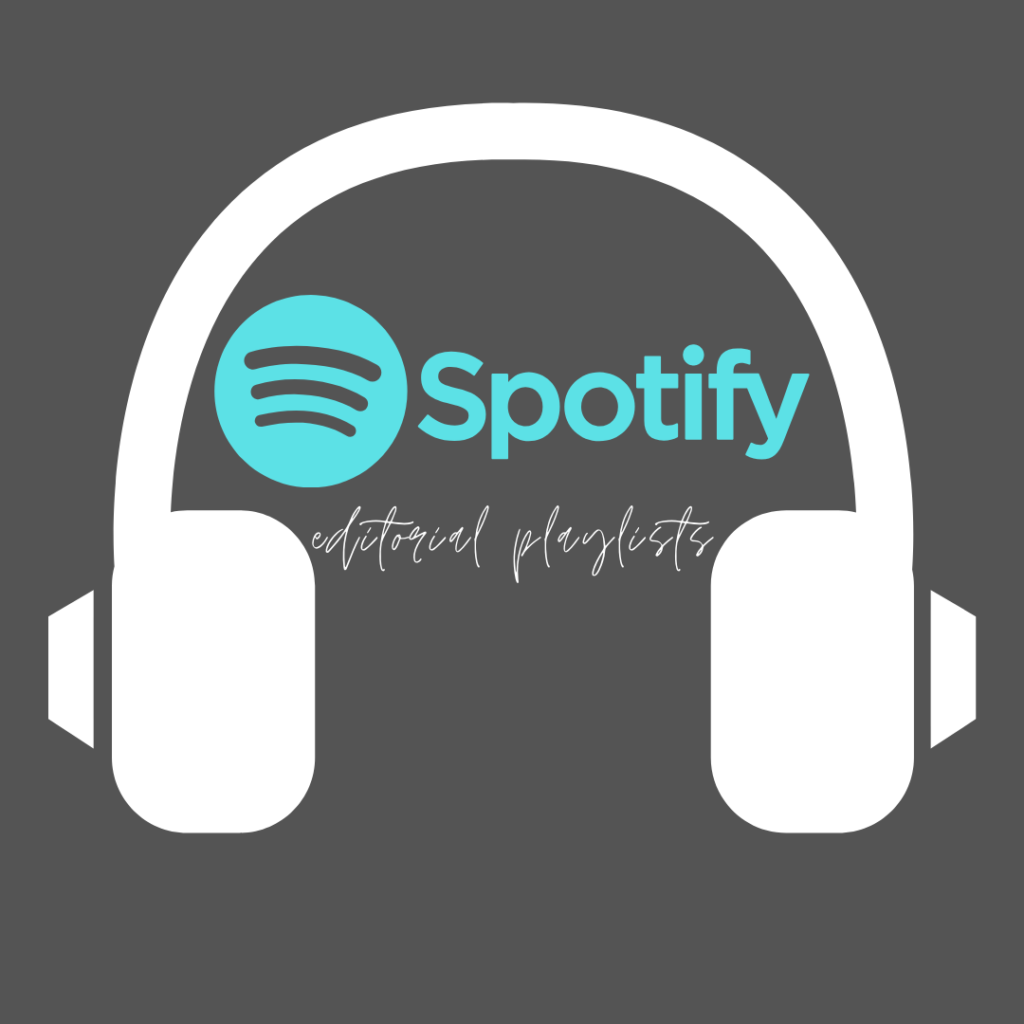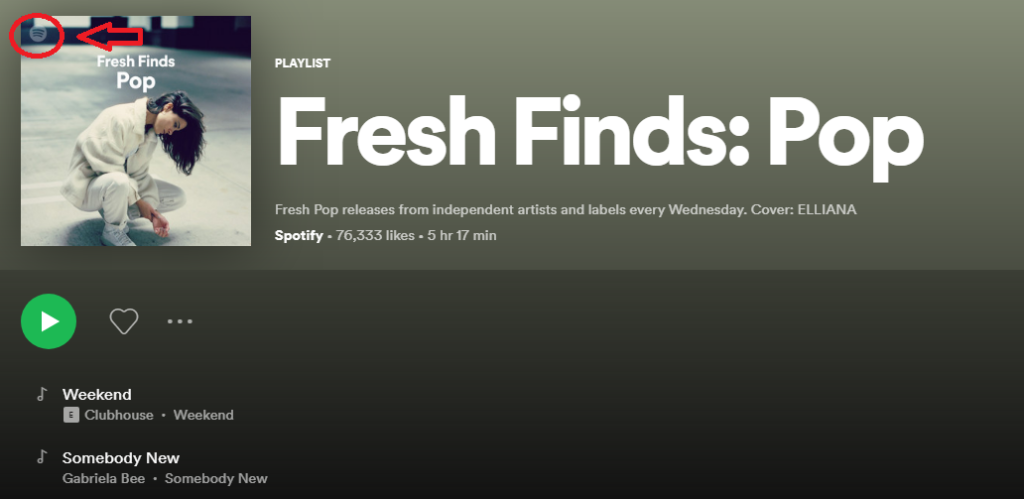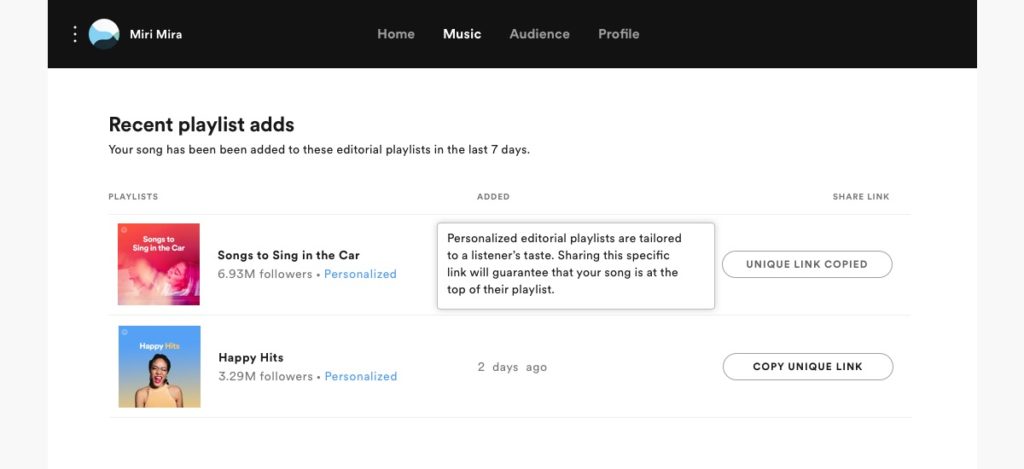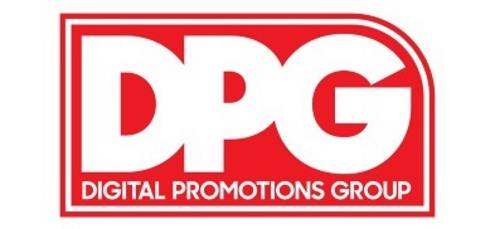
Let’s get right to it. First off, if you are thinking you can pay to get on a Spotify editorial playlist, and this article will tell you how, you can stop reading right now. Spotify itself says it is impossible to pay to get on an editorial playlist. Spotify’s Co-Head of Music Strategy, Jeremy Erlich, in a recent article in Forbes Magazine made that very clear:
“If anyone tells you to pay for playlisting, it’s a lie. Going through the pitch tool is the only way.”
Erlich is talking about paying someone to help you get your music on Spotify editorial playlists. But there are at least three different types of playlists on Spotify and other platforms, and if you’ve run into some confusion trying to navigate playlists as an indie artist, you aren’t alone.
TYPES OF PLAYLISTS:
Editorial playlists – the platform’s curators and editorial team create these playlists. Examples: Spot’s Rap Caviar, Mood Booster
Algorithmic playlists – the platform’s algorithms (programmed by Spotify’s team) pick up tracks and add them to playlists. Examples: Spotify’s Discover Weekly, Your Daily Mix.
Independent playlists – also called listener playlists, user generated playlists, third party playlists. These are created by music fans and brands and posted on the platforms. Examples: Pepsi’s Crossing Borders, Indiemono’s New Indie Music.
Editorial and algorithmic playlists (or combinations of both, or algatorial playlists) on Spotify cannot be pitched directly. Independent playlists can be pitched directly and DPG pitches those as part of an artist’s online strategy (although we stay as far away as possible from pay-to-play), and recently there was an excellent article from Music Ally on the power of these smaller playlisters.
There’s a lot to know in the playlisting world, and there’s also a lot of information out there today to sift through. We’re here today focusing on what a Spotify Editorial Playlist is, how you can set yourself up to potentially be noticed by the Spotify editorial teams so you can possibly find your music on one, and why landing a placement on one is pretty sweet. More info on other types of playlists and other platforms in upcoming posts!
SPOTIFY EDITORIAL PLAYLISTS
Simply put, Spotify Editorial Playlists are created by Spotify’s team of curators and editors. You can tell it’s a Spotify Playlist if you see their logo in the top left corner.

Spotify has a team of thousands of specialists from around the world who select tracks for their editorial playlists mainly, from what Spot tells us, based on listening habits and compatibility, (and of course quality), and adds them to Playlists.
In order to be considered for a Spotify Editorial Playlist, you must submit the track through their Playlist Pitch Tool – Spotify will not come find you – and to do this, you need to have a Spotify for Artists account. This will allow you to submit an upcoming, unreleased song for Spotify’s Playlisting team to consider for an Editorial Playlist. Some of these playlists are hard-curated, i.e, there is a particular order to the tracks, as created by the curator, for example, Spotify’s Rap Caviar and Lorem playlists. Some of them are what is called ‘personalized’, i.e, if you land a placement, Spotify will give you a unique link to share with your fans – when they click the link, they will see your track at the top of the playlist. Top placement!! (it matters). There are thousands of these, and examples include ‘New from NYC: Pop’, ‘Retro Pop’

Check out Spotify’s article on how the playlist ecosystem is changing…
So, what is the advantage of getting your music placed on an editorial playlist? ANY playlist placement is an accomplishment – but a Spotify Editorial Playlist placement is coveted because of the instant cred it bestows on your music, and because Spotify uses their platform to promote these playlists, thus your music will be promoted within their ecosystem. That means you have a better chance for more plays, more shares, more exposure = more revenue and getting your music out there! Also, it’s pretty cool that someone on Spotify’s team listened to your song and deemed it appropriate to add to a Playlist that thousands of other artists are vying for, and most often, has thousands to hundreds of thousands of monthly listeners. It has the potential to grow into only great things from here. We’ve seen it, and Spotify’s Co-Head of Music Strategy, Jeremy Erlich gives a great example of how it can work in that same Forbes article:
“Someone on our Australian team found Tones and I put it on a local playlist, it did really well. Then someone in Scandinavia really liked it, put it on their playlist and it just started snowballing. Something like 8 weeks after release, “Dance Monkey” was #1 on Today’s Top Hits on the cover.”
So, how do you get on one? Well there is not an easy answer except that you must submit your song for consideration (through the Playlist Pitch tool), and of course have a Spotify for Artists account. From there, it’s in the hands of Spotify’s team to listen, like it, and decide that it deserves a spot on a playlist that’s fitting. Although there are things you can do to help bring your music to the attention of the editorial team so that possibly they take a listen:
- Submit your music for editorial consideration on Spotify for Artists (S4A) as early as possible, and a month in advance is not too soon!
- Craft your pitch to give yourself as much credibility as possible. Check out Cyber PR’s article on best practices for Spotify Playlist Submission, and another great article in Rolling Stone Magazine!
- Engage your fan base before release!
Everything you do can be a step towards what all artists are after. To break through the noise. And it is possible.
While Spotify and getting on editorial playlists can be incredibly important, it’s also really important to know and understand the entire ecosystem here. Every action and step you take as an artist supports the next. Touring (when it comes back online) and livestreams support streaming, and vice versa. Connecting with your fans in an emotional real-life way is pretty irreplaceable, and will gain you life long fans. Fans that will follow you on social media, stream your music, stream your music some more – it’s all connected. And Spotify pays attention to all this type of fan engagement. They have noted more than once that they strongly consider fan engagement when working to place music on their playlists.
There’s so much to know and discuss about playlisting! This really just touches the surface. If you have questions on anything in this article or would like to speak to a DPG Team Member about Playlisting, or anything else related to how to get your music heard and succeed as an artist, please contact us here. We’d love to talk.
Article Authors:
Andrea Young, Founder & Chief Playlisting Officer – DPG Worldwide
Molly Hanley, Marketing & Content Creator – DPG Worldwide
Resources:
1. Spotify’s Head of Music Explains How To Get On Playlists – by Danny Ross, Forbes Magazine , March 2020
2. The Power of Smaller Playlists… – Music Ally, May 11, 2020
3. Best Practices for Spotify Playlist Submission – Cyber PR, Spring 2020
4. How Do You Get a Hit Song? Spotify Says to Pitch It – by Amy X Wang Rolling Stone Magazine, February 2020
5. Our Playlist Ecosystem is Evolving… – Spotify for Artists blog, March 2019
